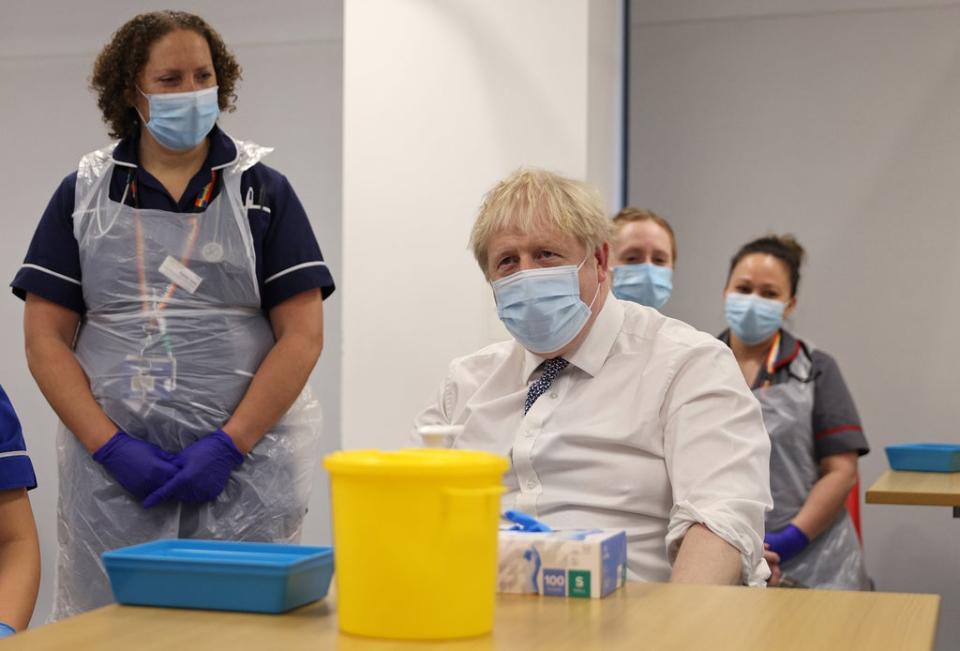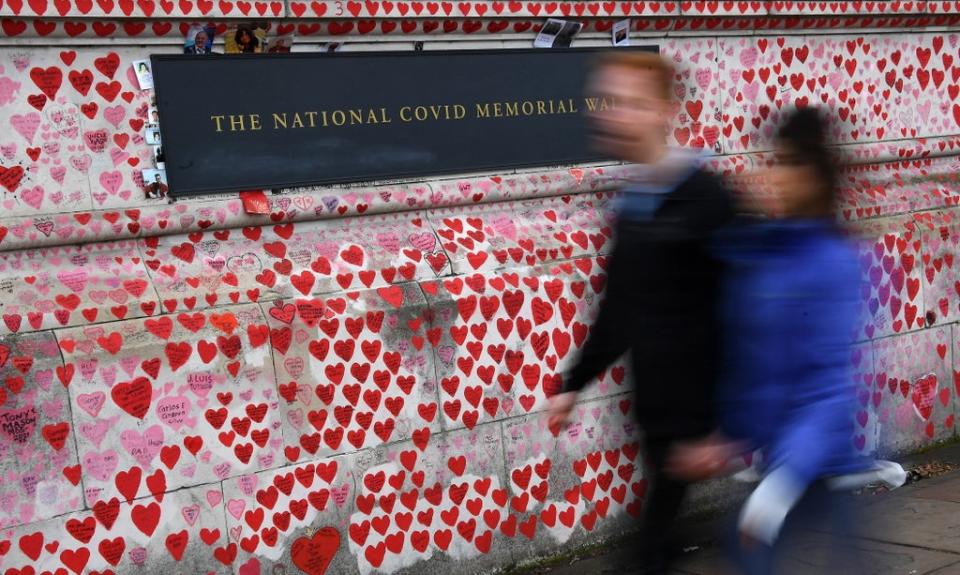UK Covid : Everything we know about cases, deaths and hospitalisations as Boris Johnson set to abandon rules
Boris Johnson has announced that the final Covid restrictions in England may be lifted within weeks – a move described as either “very brave or very stupid” by a leading scientist.
On Wednesday the Prime Minister said that, “provided the current encouraging trends in the data continue, it is my expectation that we will be able to end the last domestic restrictions - including the legal requirement to self-isolate if you test positive - a full month early”.
The rule that said people who test positive must isolate for five days had been due to expire on 24 March, but under the new timetable plans for “living with the virus” are to be unveiled in less than a fortnight, when self-isolation requirements are expected to be scrapped.
Most of England’s Covid restrictions were dropped in January, including mandatory face masks (though these are still required on public transport in London and are recommended in many other settings), and vaccine passports were also scrapped along with advice to work from home.
But with cases, hospitalisations and deaths still at high levels – comparable to figures at what was considered to be the peak of the second wave last winter – is the move premature?
Political opponents of the government, and eminent scientists, have warned that it is too soon to behave as if the pandemic is now over.
Supporters of a loosening of the rules argue that the vaccine rollout means most people in the UK are now at a much lower risk of becoming seriously unwell or dying from the virus.
Here we look at the trajectory of the pandemic to see how the data – and the rules – have changed.

What has happened to Covid case rates?
The UK has undoubtedly seen a big drop in new infections since early January, when the highly transmissible Omicron variant drove infections above 200,000 a day.
Current caseloads are around a third of that (68,214 on Wednesday, and a seven-day average as of Sunday of 69.296) – the lowest recorded since mid-December.
However around 10 days before Christmas, England was under ‘Plan B’ measures, with compulsory face masks in most public indoor venues and NHS Covid Pass for places including nightclubs.
Looking back further than December, the UK last saw daily cases in the high 60,000s on 8 January 2021. At this point, England had just entered a third, strict national lockdown.
While the vaccine programme and the emergence of new variants means a like-for-like comparison is difficult to make, the difference in tone – and policy – from the government for two points in time when case rates were broadly comparable is striking.
What about hospitalisation figures?
Hospitalisations are also falling, but government data shows there are still more inpatients being treated for the virus now than for most of 2021.
From around 26 March until the end of 2021, the number of hospitalised people with Covid was never higher than it is today.
So there is evidently still pressure on hospitals, albeit falling.
Looking at the figures, there were 13,545 people in hospital with coronavirus as of 9 February 2022. Discounting the recent January peak, the number of people in hospital has not been at such a high level since 26 February 2021.
That is a 10-month period when there were fewer people in hospital, yet for much of that period stricter Covid rules were in place.
They include limits on outdoor gatherings of either six people or two households, which came into force from 29 March following the nationwide lockdown. The rule of six for indoor settings did not ease until the summer.
What about deaths?
The number of daily deaths reported within 28 days of a positive test also remains stubbornly high.
The latest seven-day average daily death toll of 218 is, excluding last month’s peak, the highest since 3 March, meaning people are still dying from the virus at a significantly higher rate than for the spring, summer and autumn of 2021.
As a point of comparison, on 3 March last year, the government deemed the situation serious enough for England to still be in a lockdown.
Five days after this date, ministers cautiously announced that schools in England could reopen for primary and secondary school students, and socialising in an outdoor public space was allowed, but only between two people. A ‘stay at home’ order was still in place until 29 March 2021.
That is in contrast with the current reading of similar figures, which the government argues is informed by a significant uptake of vaccines and boosters, and the dominant Omicron variant, which causes less severe infection than the Delta mutation.
What is the government’s latest plan?
The prime minister plans to present his strategy for "living with Covid" when parliament returns from a short recess on 21 February, with an aim of lifting the requirement to self-isolate within days of that.
The move will see Covid-19 treated in a similar way to other infectious diseases such as flu, with people only encouraged to stay at home if they were ill.
Other remaining restrictions, which include the ability for councils to order the closure of premises where the virus could be spreading, may also be axed.
It is unclear whether travel rules, such as the passenger locator form, will also disappear.

What are the scientists saying
A number of leading scientists greeted the news with caution. Simon Clarke, a professor in microbiology at the University of Reading, said ending the self-isolation rule will be "an experiment which will either be shown to be very brave or very stupid".
He said: "Omicron may be on the wane in Europe but other parts of the world are still in the full flush of a surge in infections. In such circumstances, as we have seen before, the virus is in the best possible position to mutate again, and there is absolutely no certainty that any new variant would be less dangerous.”
Professor Tim Spector, who runs the Zoe app Covid study at King's College London, said scrapping five days of isolation for infected people was “crazy”.
“I think it is... giving the impression that Britain, that the UK, has beaten Covid, I think it's totally the wrong way to do it,” he said.
Christina Pagel, a professor of operational research at University College London, said the decision was “not science based”.
She tweeted: “Dropping isolation makes work & socialising riskier & boosters are waning, Covid keeps evolving & it's harder to know about local case levels. Basically government plans that we will all get Covid several times - like a cold but with a much more dangerous disease.”
Professor Andrew Watterson, of the University of Stirling, called the announcement a “big leap” and warned there was still “confusion because it's quite clear that what's being called for, and even the prime minister has said this, is not an end to self-isolation, it's an end to the regulation about it”.
Professor Peter Openshaw, who advises the government on Covid, said he would be "very reluctant" to suggest this was the end of Covid, adding it was "still a very nasty virus".
Charities representing vulnerable people also expressed alarm.
Phillip Anderson, head of policy at the MS Society, said ending the restrictions will "heap yet more worry and confusion on thousands of immunocompromised people".
James Taylor from disability equality charity Scope, said: "Scrapping self-isolation will mean that some disabled people will be feeling very anxious and could potentially be placed in situations that could prove deadly.”
Additional reporting by agencies

 Yahoo News
Yahoo News 
